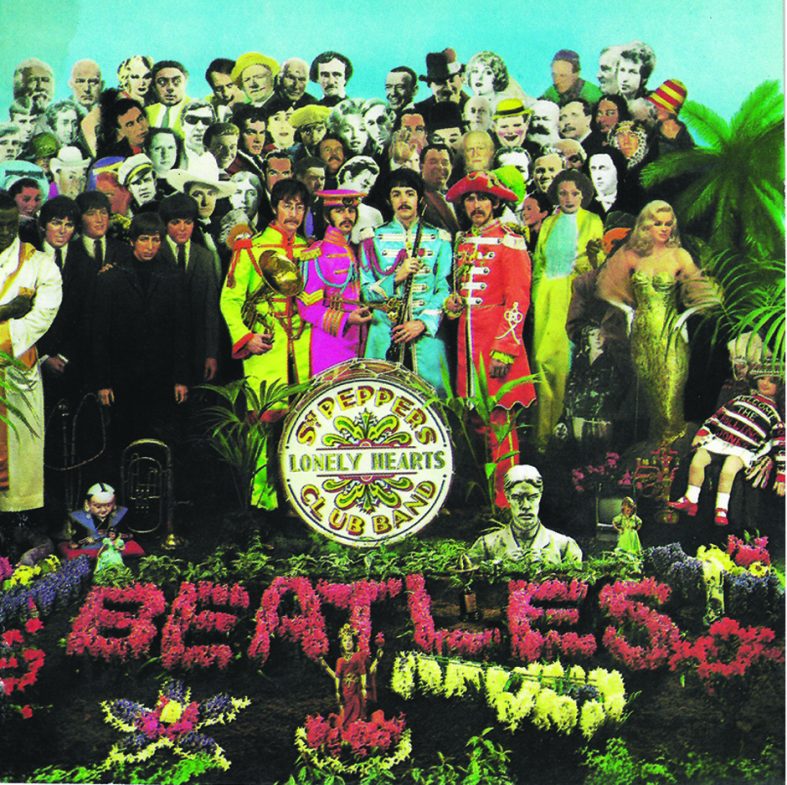By D. Joeff Williams
For the past nine months in this space, I have been sharing small stories and material related to two of my favorite distractions when not doing my day job—both seeing and learning about art (more specifically, paintings and sculptures) as well as classic rock music. These two intersected many, many, many years ago when I started buying albums. I was really drawn in by the album covers and how the images and design often relayed a message that was usually obvious but sometimes a little more subtle.
Albums have seen a resurgence in the past few years, mainly because some say the recordings are purer and the sound more reflective of the original composition. I think there are also elements that resonate with the simple action of putting an album on to play and sitting down to take the time to listen.
So what gives that piece of art or that album cover or vinyl record value? Is it the experience of seeing the art or hearing the music? Is it more intrinsic, relating to the rarity or even the artist themselves and their story? Is the true value just the cost of the materials—canvas, paint, vinyl, cardboard? Or is the value really in what the experience generates?
The answers to these questions will certainly vary by the individual and situation, but it still is about how you measure that value.
This is my next-to-last President’s Message; I have tried to weave the “effectiveness” element of the Academy’s three pillars with the other two of objectivity and independence. As I think about how that is best accomplished, I am reminded that the value of that effectiveness is in understanding how the Academy’s message is firmly grounded in those two elements of objectivity and independence. But how do you measure that? How do you know if you are being effective?
The Academy’s mission is focused on serving the public and the U.S. actuarial profession. So when we value that mission of service, it requires looking beyond just measuring the tangible elements—which you may be able to do with the rarity of works of art by an artist or the number of albums produced—and forces us to always be asking the question: Is what we are doing serving the public and the U.S. actuarial profession?
As the national actuarial organization in the U.S., our mission of serving requires that we remain focused on the need for our work in public policy and in professionalism to be a central element of valuing that effectiveness. Can it be measured by the number of webinars we sponsor, or even the ultimate goal for organizations like ours—the number of members? Those are certainly lofty goals—and easier to measure—but do they correlate to effectiveness? As the Academy continues to work with other U.S. organizations to show how we serve the public and the U.S. actuarial profession, it will not be the number of members that will show success, but the recognition the designation of MAAA has with the broader U.S. risk sphere.
So as I sit here and pull out that vinyl disc, carefully place it on the turntable, then move the needle over and gently lay it down, is the effectiveness of that record measured by how many were sold, or what it cost—or is it so much more than that? Is it the intangible that comes from being recognized as a part of the canon of classic rock or the group of museum painters? You can just recognize that painting or album cover and say that has value.
Take, for example, the iconic cover from The Beatles’ Sgt. Pepper’s Lonely Hearts Club Band. The songs on that album are classics, to be sure—but so is that cover. Even these days, when the album cover pops up as a thumbnail when I’m shuffling tracks on my phone: As soon as I see the cast of dozens, the flowers, the front-and-center bass drum, I know the track I’m about to listen to is quality. Similarly, I would like to think that upon seeing the MAAA designation, a person immediately recognizes the value of that designation.
Now if you’ll excuse me, John, Paul, George, and Ringo are calling.





